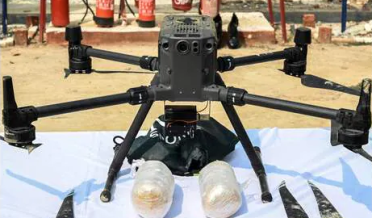
Switzitzeland
The data on Omicron is still too sparse to allow us to make clear predictions on the exact nature of this new variant, but we know enough about this strain to understand its essential meaning. Omicron is sending a message, loud and clear: this virus is capable of far more changes and far more variation than most ever thought possible and it will keep coming back to haunt us again and again.
From an evolutionary biology point of view, Omicron was to be expected. Coronaviruses in general have adapted to develop a wide variety of strategies to continue their replication and to infect and reinfect multiple species over millions of years. Coronaviruses evolved in bats and other long-lived, highly immunocompetent creatures. To survive, the virus had to learn a wealth of tricks — dampening immunity, evading early immune defences, and shapeshifting to allow for multiple reinfections. Bats, in behaviour at least, are a species quite similar to humans, living in densely packed communities but able to travel from one community to another, interacting with other animals and species along the way. Coronaviruses have learned how to thrive not only in a host species but how to infect neighbouring species as well.
At least seven coronaviruses have made the jump from animals to humans, but SARS-CoV-2 has shown that it can make the jump back into animals to reemerge and invade us again — a process called reverse zoonosis. But that’s not all this virus can do. If we look closely at the genomes of the coronaviruses that have emerged from bats and other species, we see that these viruses can readily recombine amongst each other, in addition to the point mutations we have seen in Omicron and in other known SARS-CoV-2 variants. Recombination, we know from influenza, can lead very quickly to much more virulent variants by picking up components that our immune systems have not previously seen.
While the world is now appropriately concerned about Omicron, many continue to overlook what more this virus may have in store for us. The variations we have seen in SARS-CoV-2 variants across the viral genome show us that this virus has many more tools still at its disposal to increase infectivity. Changes to the regulatory proteins can increase the virus’ ability to suppress our immune system. Mutations in structural and non-structural proteins can help the virus increase its ability to replicate. Changes in the spike, as we’ve already seen, can increase its affinity and allow it to bind more easily to our cells.
I believe we can expect a continual barrage of variants for the indefinite future unless we are able to bring this virus under control through a systematic application of public health measures and medical interventions, including vaccines, drugs, and diagnostic tests. I’ve written numerous times about a multimodal approach to Covid control but I fear, still today, not enough countries are taking heed.
Our first and best line of defence has and will always be public health, which requires leadership and a culture of understanding and acceptance of tough measures when the situation dictates. Widespread testing, at home and in all public spaces like schools, businesses, and major public events is a necessity, which must be tied to rigorous contact tracing and notification of those exposed. When new outbreaks occur, stringent public health measures need to be enforced to control the virus spread: mask-wearing, improved ventilation, social distancing, mandatory quarantine, and isolation, and — as challenging as they may be — even lockdowns if necessary. China has proven that this approach can work against the original virus and every known variant.
Beyond public health, we have our vaccines — the full three-dose regimen of top-of-the-line mRNA vaccines. Even if they cannot neutralize a new variant like Omicron completely, they will still offer some degree of added protection and, in those who mount a particularly robust antibody response, that protection may still be quite high initially.
But beyond vaccines, whose potency will no doubt fade against some variants and may fade quite considerably for all variants over time, we need other protections. Right now, our best bet lies with the wider use of monoclonal antibodies for early treatment of COVID-19 and for long-term prevention and protection from the disease. The latest generation of these therapies can be administered by injection after exposure to Covid-19 or shortly after symptoms first appear.
One single dose of monoclonal antibodies could not only prevent someone infected from a severe case of Covid, but it could also prevent that person from becoming infected again, for up to eight months potentially. Consider what this could mean for long-term care centres, naval ships, or people living in university dorms — if one person in your residence fell ill, all others could take a shot to prevent themselves from getting Covid and from spreading it to others. Eventually, oral antivirals may be used in place of an injection, but for now, we know too much about the dangers of molnupiravir, the antiviral drug currently being considered for approval, to allow for its widespread use.
It may not seem like it today, but we do have the tools at hand to control the trajectory of this pandemic. The challenge, from the very beginning, has been in not using them as effectively and rigorously as needed.







